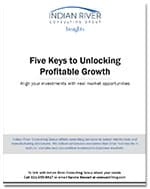
The third key to a successful market access strategy is to measure the right things.
How well are you accessing the market with your sales investments? If you’re like most distributors, you’re probably measuring sales productivity based on sales or gross profit per person. Sure, it’s easy to measure, but it provides no insight whatsoever into the activities that generate the results. It’s like measuring how hard an engine is working by looking at the speedometer instead of the tachometer.
A key component of improving your access to growth is analyzing activities in addition to results. A lot of companies put too much field sales resource into customers that don’t value it; they call on customers far more frequently than they need to; or they provide them with technical sales that they don’t really value.
Remember the demand creation categories described in Part 1 of this series of blogs: protection, interception and disruption. If you are focused on protection then measuring service levels may be more important than tracking monthly sales variances. Interception can be gauged by capturing the number of critical sales events seen, intercepted and won. Because disruption is by definition proactive, it can be measured by comparing target account growth with the overall average for your company.
Strong sales managers will take this data and make it actionable. A strategically designed sales incentive plan will serve as reinforcement. It’s critical to eliminate low-value activities by sales reps and direct them to high-potential opportunities. Targeting the right opportunities is one of the best ways to maintain or grow overall revenues.
The next blog in this series will examine what true market potential is and why it’s important to challenge long-held assumptions about your markets.
